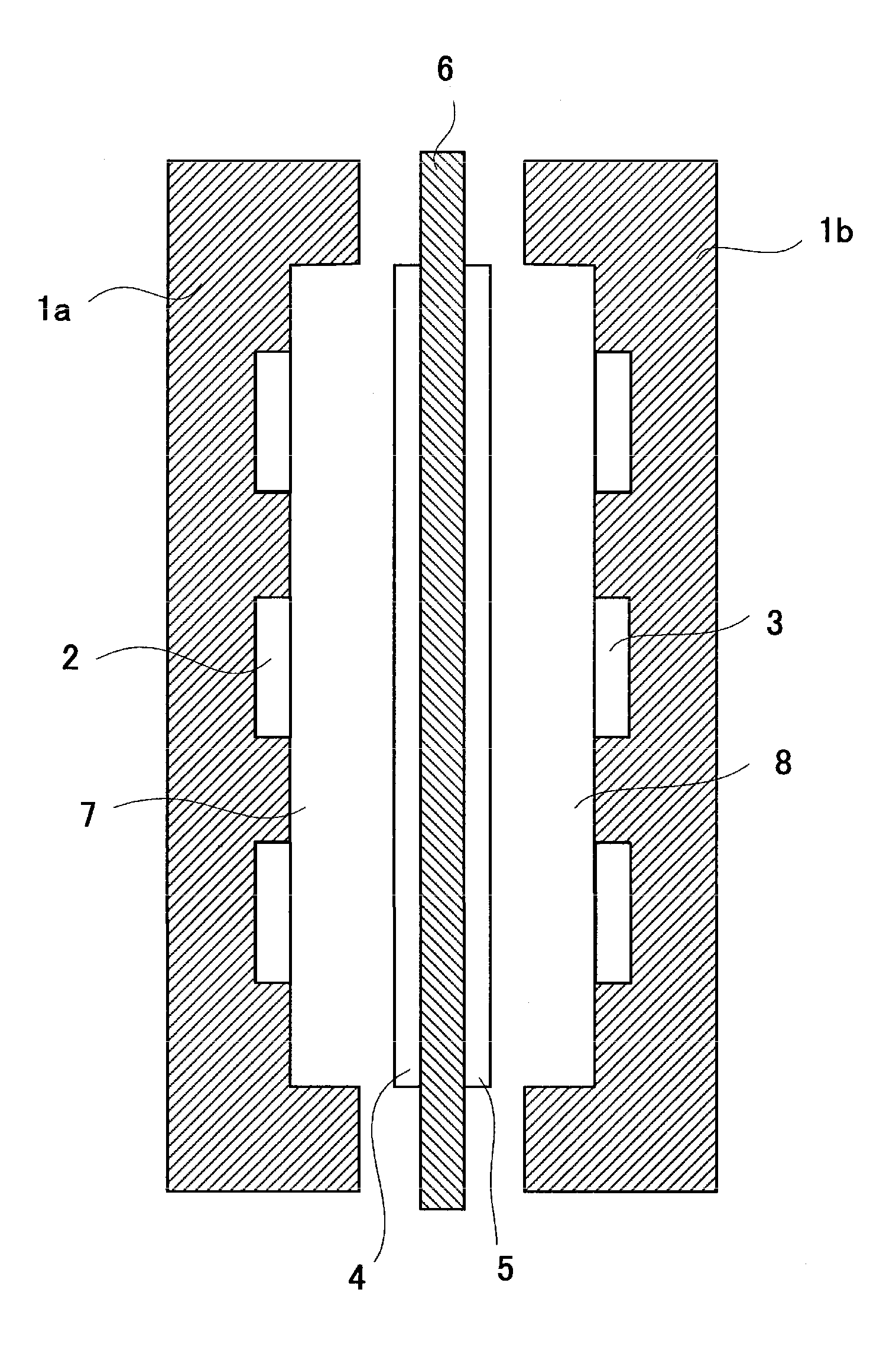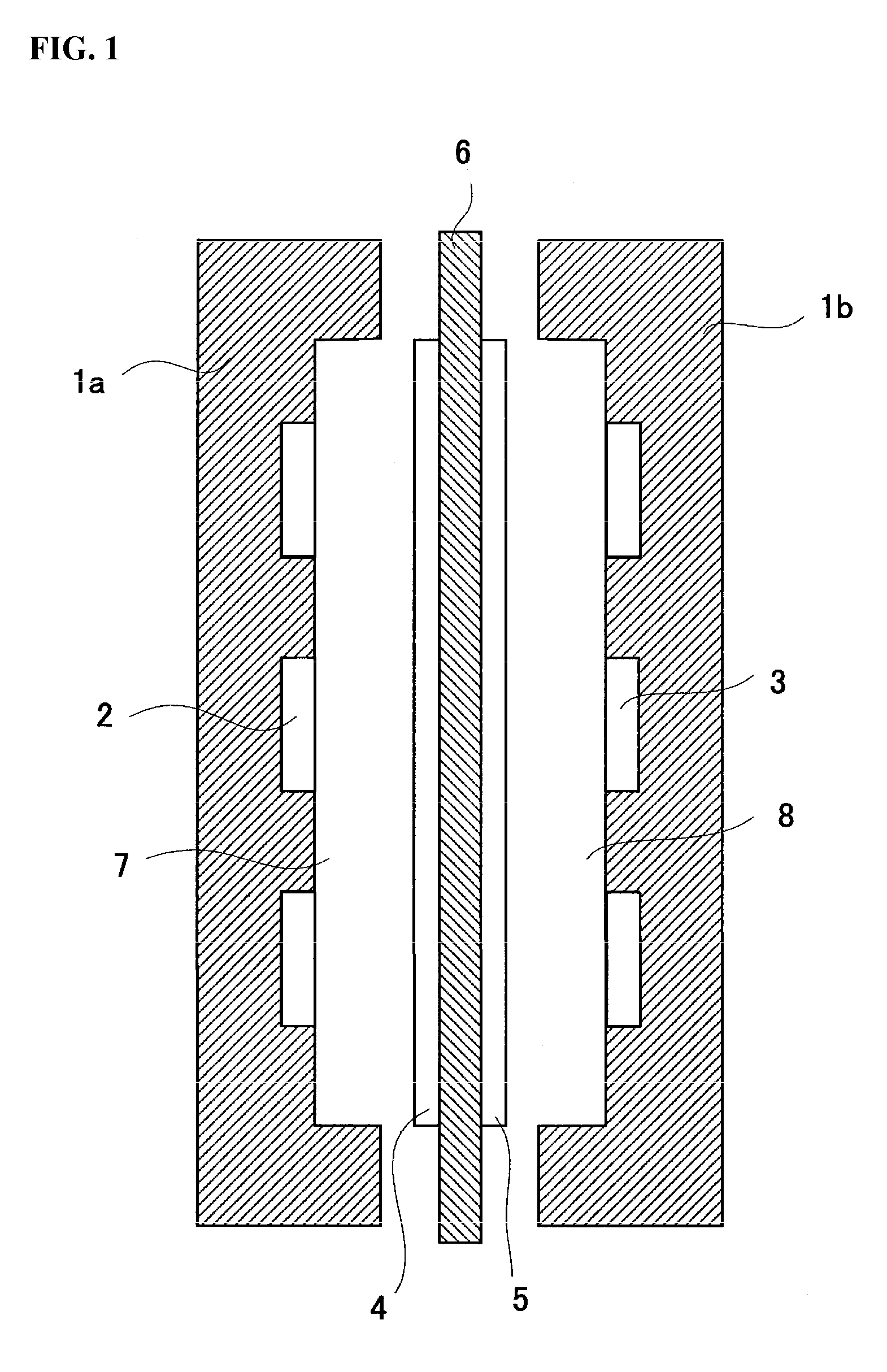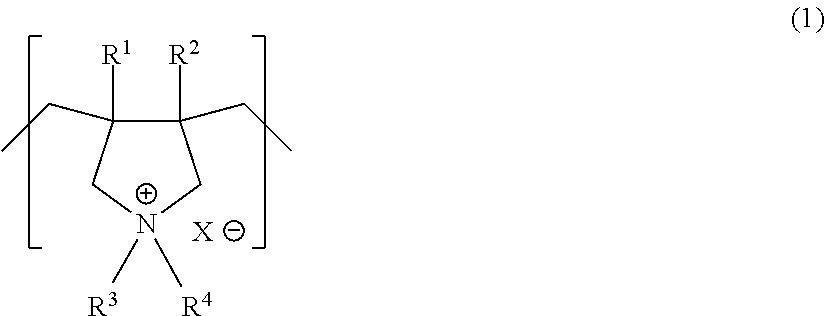Anion-exchange membrane and method for producing the same
a technology of anion exchange membrane and anion exchange membrane, which is applied in the manufacture of final products, sustainable manufacturing/processing, conductors, etc., can solve the problems of difficult to reduce electric resistance, limit the cost reduction, and the thickness of the membrane, and achieve excellent alkaline resistance, high hydroxide ion conductivity, and high ion exchange capacity.
- Summary
- Abstract
- Description
- Claims
- Application Information
AI Technical Summary
Benefits of technology
Problems solved by technology
Method used
Image
Examples
example 1
[0153]According to the constitution table shown as Table 1, a variety of monomers, cross-linking agent, polymerization initiator and solvent (water) were mixed and stirred to obtain an aqueous solution MS0 of the monomeric composition without containing methanol which was an introduction accelerator. Separately, to aqueous solutions of the monomeric composition (not containing methanol) prepared in a similar way, 100 parts by mass and 50 parts by mass of methanol which was an introduction accelerator was respectively mixed and stirred to prepare a monomeric composition dilutions MS100 and MS50.
[0154]Next, a microporous film A with a size of 20 cm×20 cm was immersed in the monomeric composition dilution MS100 in a vat at room temperature for 5 minutes, and then taken out to further sequential immersion in the monomeric composition dilution MS50 and the monomeric composition aqueous solution MS0 in a similar way, so that the monomeric composition was introduced into void portion of th...
example 2
[0155]The aqueous solution MS0 of the monomeric composition and the monomeric composition dilutions MS100 and MS50 were prepared as in Example 1, and the monomeric composition dilution MS20 was also prepared in a similar way as the preparation of the monomeric composition dilution MS100 except for the added methanol amount was changed to 20 parts by mass.
[0156]Next, a microporous film A with a size of 20 cm×20 cm was immersed in the monomeric composition dilution MS100 in a vat at room temperature for 10 minutes, and then taken out to further sequential immersion in the monomeric composition dilution MS50, the monomeric composition dilution MS20 and the monomeric composition aqueous solution MS0 in a similar way, so that the monomeric composition was introduced into the void portion of the microporous film. Then, each surface of the microporous film taken out from the vat was covered with separating material which was a polyester film having a thickness of 100 μm, and heated under p...
example 3
[0157]The aqueous solution MS0 of the monomeric composition and the monomeric composition dilutions MS100 and MS50 were prepared as in Example 1, and the monomeric composition dilutions MS70 and MS20 were also prepared in a similar way as the preparation of the monomeric composition dilution MS100 except for the added methanol amounts were changed to 70 parts by mass and 20 parts by mass, respectively.
[0158]Except for changing the immersing order of the film to the order of the monomeric composition dilution MS100→the monomeric composition dilution MS70→the monomeric composition dilution MS50→the monomeric composition dilution MS20→the monomeric composition MS0, the preparation of the anion-exchange membrane, treatment and evaluation were done as in Example 2. The results are shown in Table 2 as well.
PUM
| Property | Measurement | Unit |
|---|---|---|
| Percent by mass | aaaaa | aaaaa |
| Fraction | aaaaa | aaaaa |
| Fraction | aaaaa | aaaaa |
Abstract
Description
Claims
Application Information
 Login to View More
Login to View More - R&D
- Intellectual Property
- Life Sciences
- Materials
- Tech Scout
- Unparalleled Data Quality
- Higher Quality Content
- 60% Fewer Hallucinations
Browse by: Latest US Patents, China's latest patents, Technical Efficacy Thesaurus, Application Domain, Technology Topic, Popular Technical Reports.
© 2025 PatSnap. All rights reserved.Legal|Privacy policy|Modern Slavery Act Transparency Statement|Sitemap|About US| Contact US: help@patsnap.com



